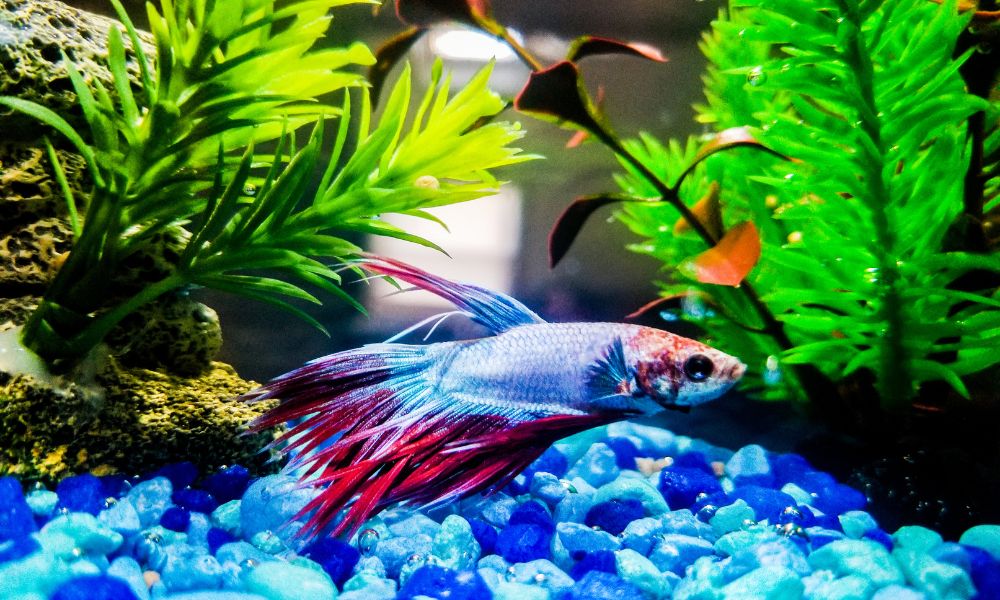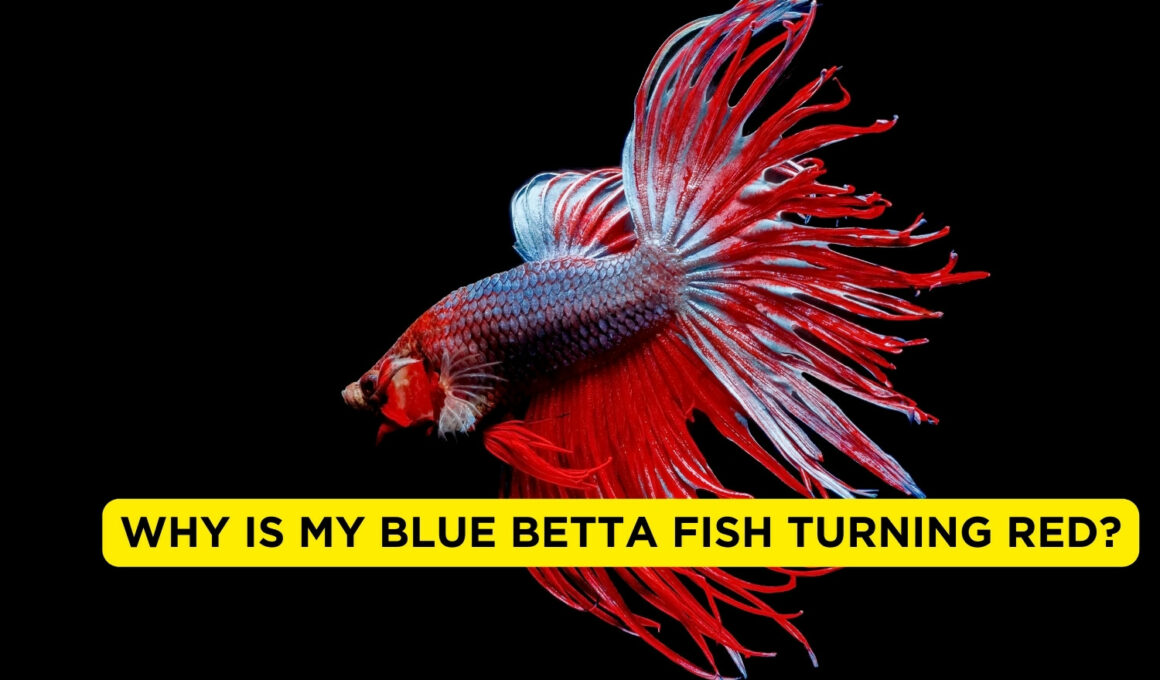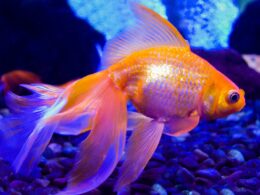In this article Show
Particularly striking is the blue betta fish, known for their rich, azure hues. However, as a seasoned fishkeeper, I’ve observed a curious phenomenon: sometimes, these blue bettas gradually shift to reddish coloration.
This color transformation can be puzzling, and it often leads betta owners to wonder about the health and well-being of their aquatic pets.
In this article, we’re going to explore the reasons behind this intriguing color change. We’ll look at the science of betta fish coloration, which is a complex interplay of genetics, environmental factors, and health conditions.
Understanding these aspects is crucial for maintaining the well-being of your betta fish. From water quality and diet to stress factors and genetics, various elements can influence the coloration of your betta fish.
Why Is My Blue Betta Fish Turning Red?
Yes, a blue betta fish can turn red due to various factors, including genetic predispositions, changes in environmental conditions, dietary influences, and health issues. This color transformation, common in bettas, can be indicative of changes in water quality, temperature, or diet. Proper aquarium maintenance, a balanced diet, and monitoring for signs of stress or illness are essential for maintaining the vibrant color and health of your betta fish.
Common Causes of Color Change in Betta Fish
1. Environmental Factors
- Water Quality: Poor water quality is a primary cause of color changes in betta fish. Ammonia or nitrate buildup, improper pH levels, and lack of regular water changes can stress your betta, leading to color fading or shifts.
- Temperature: Bettas are sensitive to temperature fluctuations. Temperatures too high or too low can cause stress, impacting their coloration.
- Lighting: Adequate lighting is vital. Too much or too little light can affect your betta’s colors, often leading to a duller appearance.
2. Diet and Nutrition
The diet plays a crucial role in maintaining the vibrant colors of a betta fish. A nutritionally balanced diet rich in carotenoids and other color-enhancing nutrients can help sustain and enhance their natural hues. Conversely, a poor or monotonous diet can lead to color loss or changes.

3. Stress and Illness
- Signs of Stress: Look out for signs like faded colors, clamped fins, or lethargy. Stress, often caused by factors like aggressive tank mates, inadequate hiding spaces, or constant disturbances, can lead to color changes.
- Illness: Diseases such as fin rot or bacterial infections can also lead to color fading or changes. It’s important to identify and treat any health issues promptly to restore and maintain your betta’s vibrant color.
Preventing Unwanted Color Changes in Betta Fish
To ensure your betta fish maintains its vibrant coloration, it’s essential to focus on two main areas: creating a healthy environment and providing a balanced diet.
Maintaining a Healthy Environment
- Water Quality: Regularly test and maintain the water parameters, keeping ammonia and nitrite levels at zero, nitrates low, and the pH stable. Perform weekly water changes of about 25-30% to keep the environment fresh and clean.
- Stable Temperature: Betta fish thrive in a stable temperature range of 76-82°F (24-28°C). Use a reliable aquarium heater to maintain consistent water temperature.
- Appropriate Lighting: Provide a natural day-night cycle for your betta with moderate lighting. Avoid overly bright or continuous lighting to reduce stress.
Providing a Balanced Diet
- Quality Food: Feed your betta high-quality pellets specifically formulated for bettas. These pellets are designed to meet their nutritional needs and often contain color enhancers to maintain vibrant hues.
- Variety: Supplement the diet with live or frozen foods like brine shrimp or bloodworms. These not only provide essential nutrients but also contribute to the richness of the betta’s color.
- Feeding Schedule: Feed small amounts twice a day, ensuring not to overfeed as this can lead to health issues and affect coloration.
By adhering to these simple yet effective best practices in aquarium maintenance and diet, you can significantly reduce the chances of unwanted color changes in your betta fish, keeping them healthy and their colors bright and beautiful.










